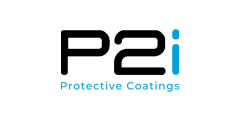Making Smartphones More Sustainable: Live Long And Greener

Longer product lifetimes can help reduce smartphones’ environmental impact. First, however, vendors and carriers may need to find more efficient methods of liquid protection. Deloitte Global predicts that smartphones are likely to generate an astonishing 146 million tons of carbon dioxide (CO2) or equivalent emissions (CO2e) in 2022 alone, placing an urgent need to reshape the sustainability practices of the smartphone industry.

Manufacturers and suppliers must urgently find ways of reducing the carbon footprint generated both by the manufacturing process and across the product lifecycle. They need to be able to extend product life and produce less waste during the manufacturing process whilst also focusing on extending the life of devices further by making them more repairable. These aims are critically important in the face of today’s climate emergency. After all, “the single biggest factor that could reduce a smartphone’s carbon footprint is a longer expected lifetime.” But how can manufacturers and suppliers best achieve them and what are the benefits of this?
How liquid protection extends product life
Producing products with a longer lifespan will help reduce the need for repairs and spare parts, and a manufacturer’s environmental footprint. The key to ensuring that level of robustness in production is the utilization of longer-lasting protection. It is here where liquid protection plays a crucial role.
Of course, manufacturers must largely focus on reducing e-waste, but also on extending the product lifecycle with design-in sustainability. That involves protecting the product from damage, including from liquids, right from the start. The logic is simple – If products are not damaged, they are not thrown away and there’s less need to mine for minerals and increase the environmental footprint. In the electronics manufacturing sector, damaged products represent the fastest growing waste stream, so the urgency in the race to reduce waste is clear. Manufacturers must act now, yet many simply don’t have the right systems in place to prevent liquid damage and reduce e-waste.
Live long and prosper
Making products that live for longer will be the fastest route toward satisfying ESG demands for electronics manufacturers. According to the Global E-Waste Monitor 2020 report, 75% of emissions linked to a smartphone can be attributed to the manufacturing stage. It might come as a surprise but extending the life of these devices by just 4.5 years can cut emissions in half, making the smartphone lifespan extension the single biggest factor that could reduce its carbon footprint. One way to achieve it is by implementing protective technologies that were designed to prolong the product's lifetime at its design stage. With the right level of liquid protection incorporated into the devices, manufacturers can not only contribute to saving the planet but also save on the costs of ‘tear downs’ and repairs later on.
Coatings that fall short
Traditional coatings are simply not sufficient enough to reduce repairs and carbon footprint. Liquid-based conformal coats protect only certain components, however, do not protect the full board inside the device. This can mean the end for devices that are susceptible to water ingress such as those with multiple moving parts or are open in design. Components that protect the insides of devices such as O-rings and gaskets fall short of resilience as they can be easily dislodged, allowing liquid to seep in and causing irreversible water damage.
There’s also the case of device cleaning which presents a further danger. Chemical cleaning products can be particularly harmful if they reach the inside of a device. This has become a more significant problem as a result of the pandemic, which has meant devices are likely to be cleaned more often.
There is a better way
Adding solid protection to devices is crucial to increase their lifespan and help manufacturers become more sustainable. However, traditional coatings are not the solution as they are likely to increase the devices’ bulk and weight, making them less desirable to consumers and therefore negatively affecting the manufacturers’ bottom lines. They can also remove the all-important design freedom of engineers who wish to innovate and pioneer new electronic devices.
Manufacturers have always wanted to have greater freedom to design electronics that look instantly appealing and be comfortable for users to handle and operate. The latest ultra-thin plasma coatings from P2i allow electronics manufacturers to embrace that design freedom and have complete confidence in device protection that supports sustainability initiatives. Even when water can easily enter a device, whether, by damage or design, P2i’s ultra-thin plasma coatings can eliminate internal corrosion and prolong the device's lifespan, without compromising on their weight, usability, and appeal.
As less than 20% of electronic waste is currently collected and recycled, adopting nano-technology liquid protection solutions will also enable manufacturers to fully rework their devices. Reducing e-waste, costs, and the use of chemicals by applying nano-coatings is a great way to deliver a sustainable competitive advantage to consumers and protect the environment.
- +1 Like
- Add to Favorites
Recommend
- How To Make Right To Repair A Reality,Nano coating technology eliminates the need for bulky mechanical seals
- WACKER Presents Innovative Solutions in Construction and Coatings at PAINTINDIA
- Devcon® Coatings Protect Assets from Harsh Chemical Environments
- KYOCERA‘s Ultra-Precise Plasma Processing Technology Wins Japan‘s 2021 Science and Technology Award
- Nippon Chemi-Con Developed ULP Series Ultra-Thin SMD-Type Conductive Polymer Aluminum Solid Capacitors with Compact Size and Ultra-Low Height
- Devcon® Coatings Protect Surfaces from Impact and Reduce Equipment Downtime
- Leading Electronic Products into a Direction, 0.2mm Ultra-thin High Thermal Conductivity Pad from Waermtimo
- Increasing Electronic Devices Product Life Cycles – The Benefits Of Plasma Coating
This document is provided by Sekorm Platform for VIP exclusive service. The copyright is owned by Sekorm. Without authorization, any medias, websites or individual are not allowed to reprint. When authorizing the reprint, the link of www.sekorm.com must be indicated.





































































































































































































































































































































































































































































































































































































































































































































































































































